Protein Bread {Video}
Protein bread is an excellent option for those looking for a healthy and filling alternative to traditional bread. It looks and tastes like whole wheat bread but is much higher in protein and fiber. The recipe is vegan (dairy-free, egg-free), grain-free (gluten-free), soy-free, nut-free, and refined sugar-free.
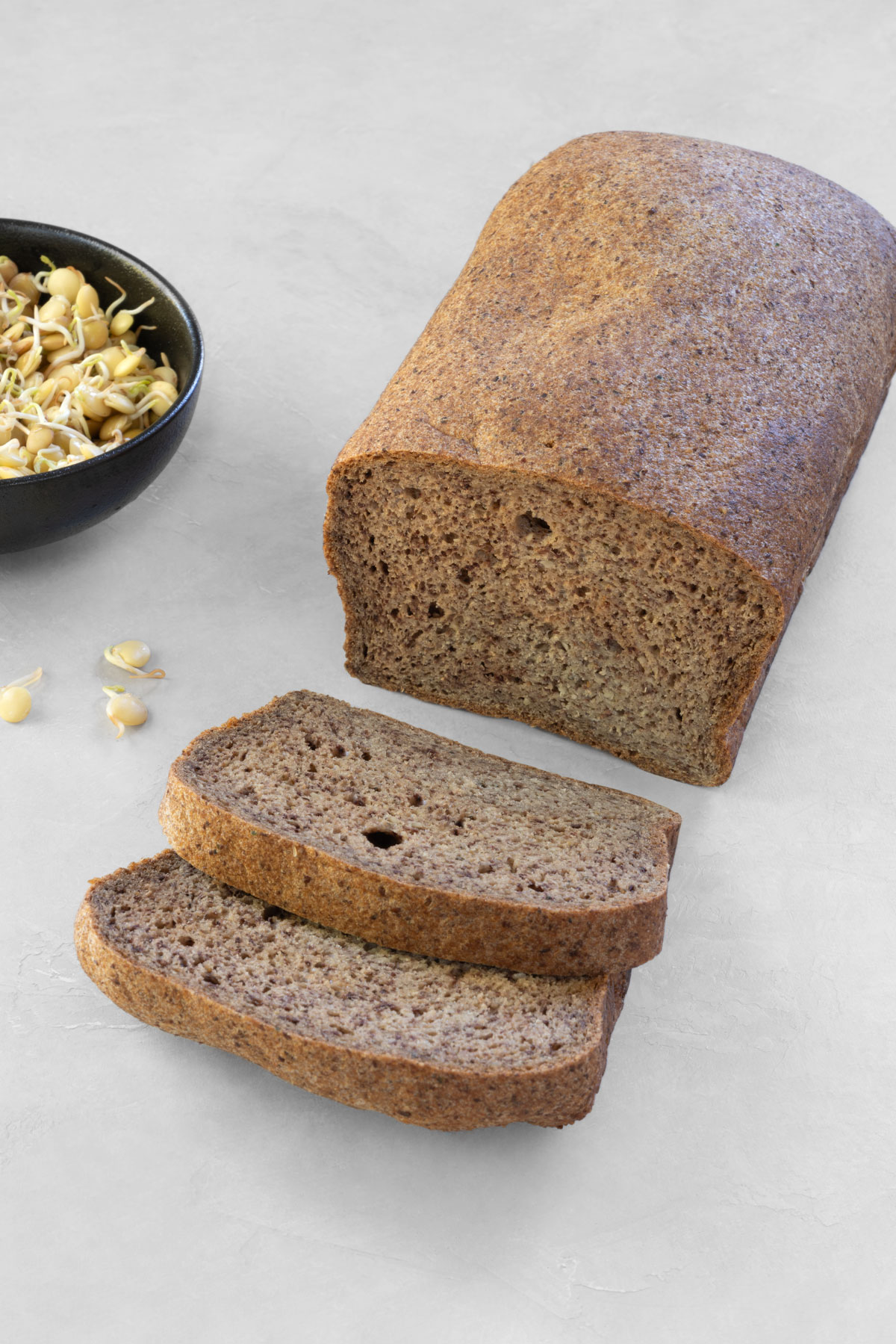
High-protein bread is not very common. I would even say that it’s pretty uncommon.
Luckily, binders such as flax seeds and psyllium husk make it easy to make bread using almost any ingredient, including legumes.
This lentil-chickpea-hemp bread is essentially protein bread.
If you’ve never heard of protein bread, it’s an innovative way to incorporate more protein into one’s diet. Some of the most popular versions of protein bread are made with eggs and cheese, but I prefer plant-based protein bread. This lentil bread is high in protein and fiber – especially compared to standard bread recipes – and is packed with wholesome ingredients, making it highly nutritious. As more and more people become aware of the benefits of bread made with high-protein ingredients, it will likely continue to gain popularity in the health and wellness community.
Of course, not all protein bread is created equal. So, if you buy protein bread in the store, always read the label and choose a high-quality product that fits your dietary goals.
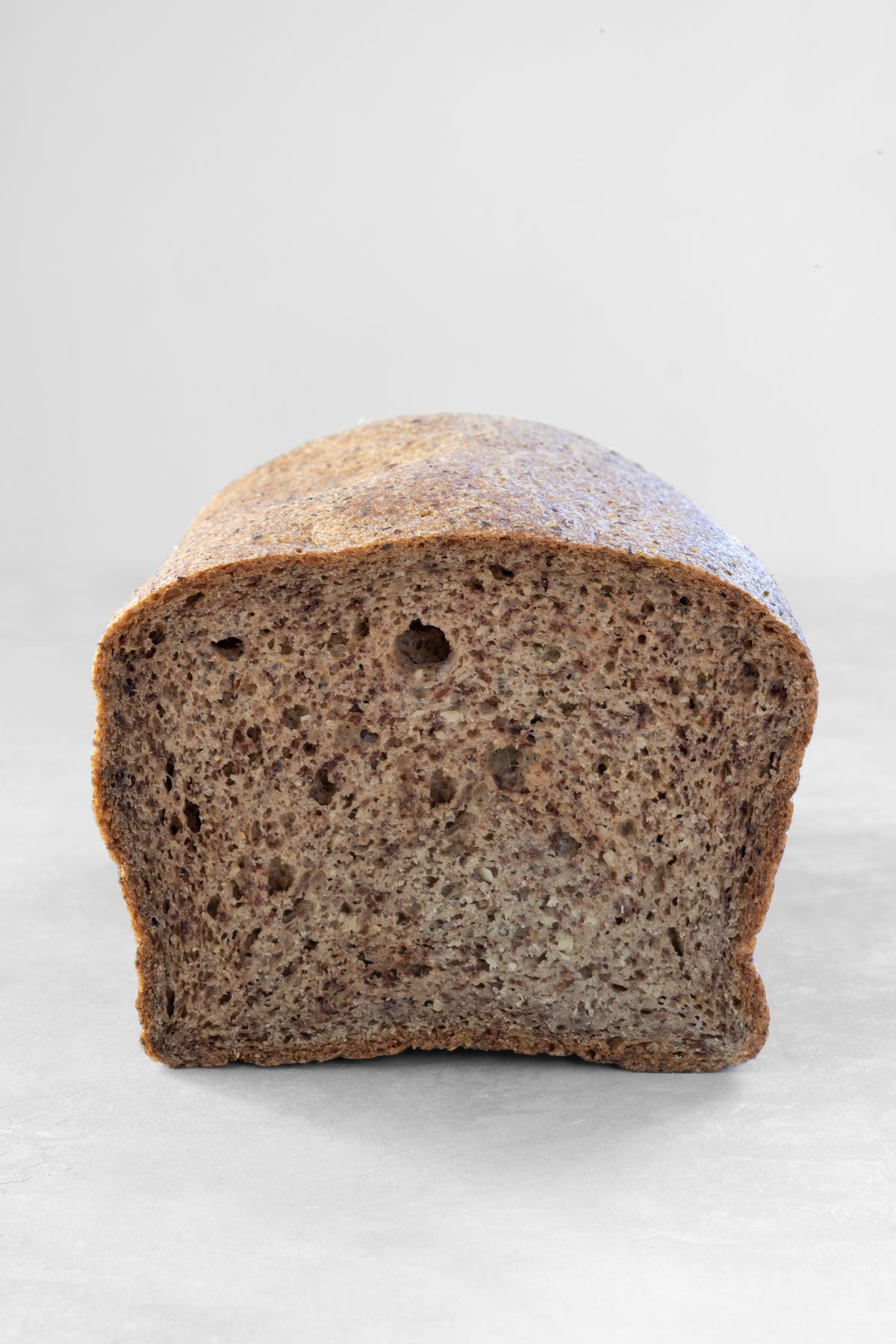
Tips for Making Protein Bread
Ingredients
This protein bread is packed with high-protein and high-fiber ingredients, including:
- Lentils: sprouted lentils substitute for some of the flour in this recipe. You can use any variety of lentils you like – brown, green, red, yellow, etc. I prefer a combination of green and yellow lentils – green lentils are the closest in color to wholewheat bread, while yellow lentils have the most neutral flavor. The important thing is that the lentils are dry, then soaked, and ideally also sprouted. The bread recipe will work with just soaked lentils, but sprouting improves the nutritional value of lentils. For instance, the protein content in lentils increases between 20-23% after sprouting! (1)
- Chickpea flour: chickpea flour helps create a soft, bread-like texture. It’s also incredibly absorbent, making it a great binding agent in this recipe.
- Psyllium husk: the main binder in this lentil bread is psyllium husk, which is a type of soluble fiber. Because psyllium is hydrocolloid – it binds water and causes a significant increase in the viscosity of a liquid – it is used as a thickening agent. As it forms a fairly elastic gel, it transforms a loose batter-like consistency into a springy, extensible, and flexible dough.
- Hemp hearts: I used hemp hearts for their high (complete) protein, but you can use any non-binding seeds you like – sunflower seeds, pumpkin seeds, sesame seeds, etc.
- Baking soda: this simple protein bread recipe is a type of soda bread – baking soda is the agent that provides lift rather than yeast.
- Lemon juice: acid is essential to cause the baking soda to create carbon dioxide gas and cause the bread to rise. You could also use apple cider vinegar or lime juice.
- Salt: one of the important functions of salt is to evoke and enhance the flavor of the bread. In addition to salt, herbs and spices are another great way to add a depth of flavor.
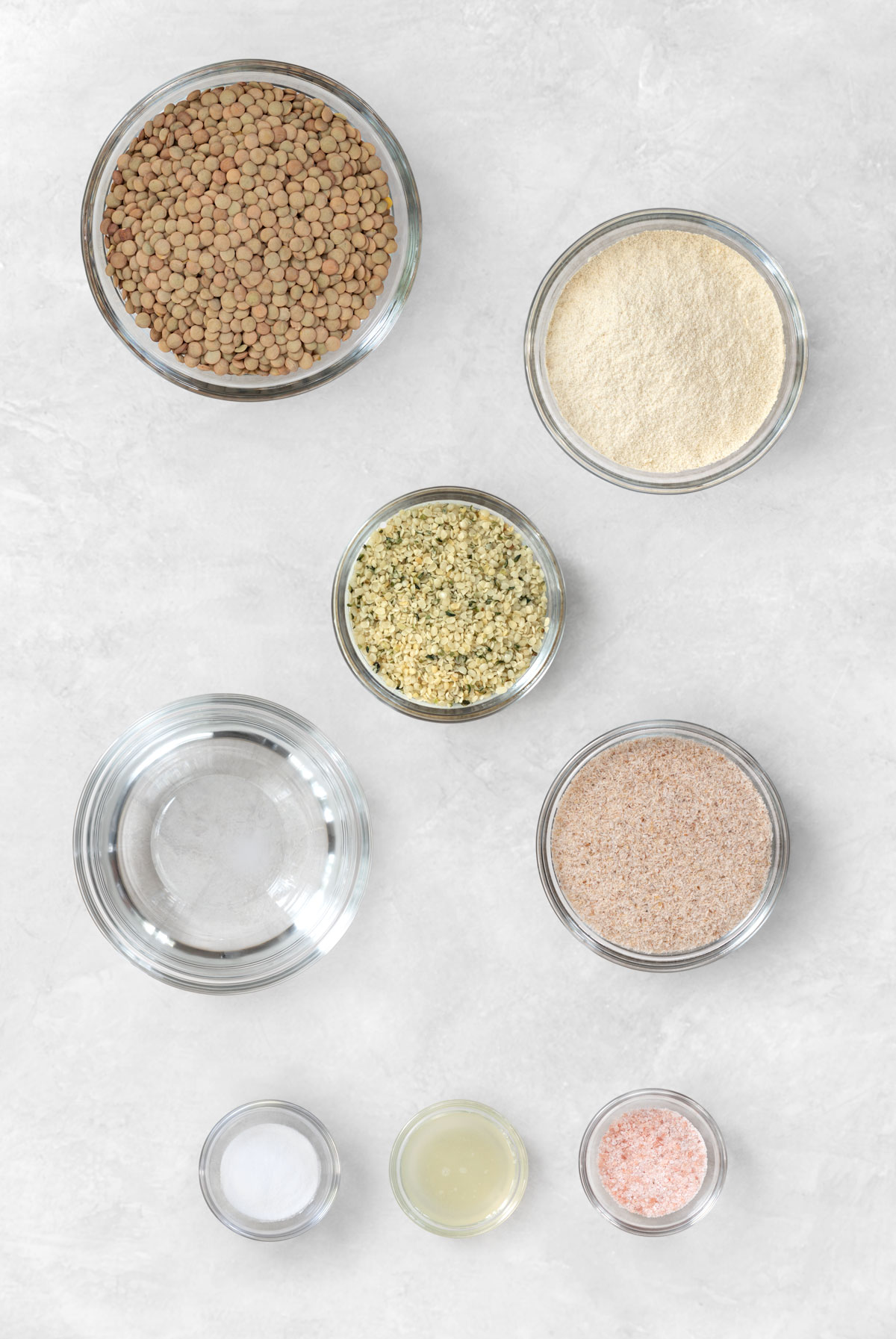
How to Make Protein Bread
Soaking and sprouting the lentils takes the longest time. Once the lentils are ready, the actual process of making the bread is quick. Here are the steps to making lentil bread at home:
- Soak the lentils. Add the dry green lentils to a bowl, cover them with water, and let them soak for about 8 hours. Once soaked, drain the soaking water and rinse the lentils.
- Sprout the lentils (optional). Transfer the soaked lentils into a strainer and set the strainer over a large bowl so any excess water can drain. If you’re using a sprouting jar, invert it into a large bowl or another object that allows it to sit at an angle. This lets water drain constantly. The lentils must stay moist but shouldn’t sit in water. Rinse the lentils every 12 hours. After 24-36 hours, sprouts should start to emerge. If there are no sprouts, drain, rinse, and leave again for a few more hours. While sprouting is not necessary, it does boost fermentation activity.
- Process. Add the sprouted (or just soaked) lentils to a food processor together with the chickpea flour, psyllium husk, hemp hearts, baking soda, lemon juice, salt, and water, and process until a dough forms. The reaction baking soda creates upon contact with acid is immediate, so don’t let the dough rest and work as quickly as possible before all the bubbles dissipate.
- Bake. Transfer the dough into a parchment paper-lined 8 x 4 inch/20 x 10 cm loaf pan, smooth the top with a spatula, and bake the bread at 380°F/193°C until crispy and golden brown, for about 50 minutes.
- Cool. Transfer the bread onto a cooling rack and let it cool completely before slicing.
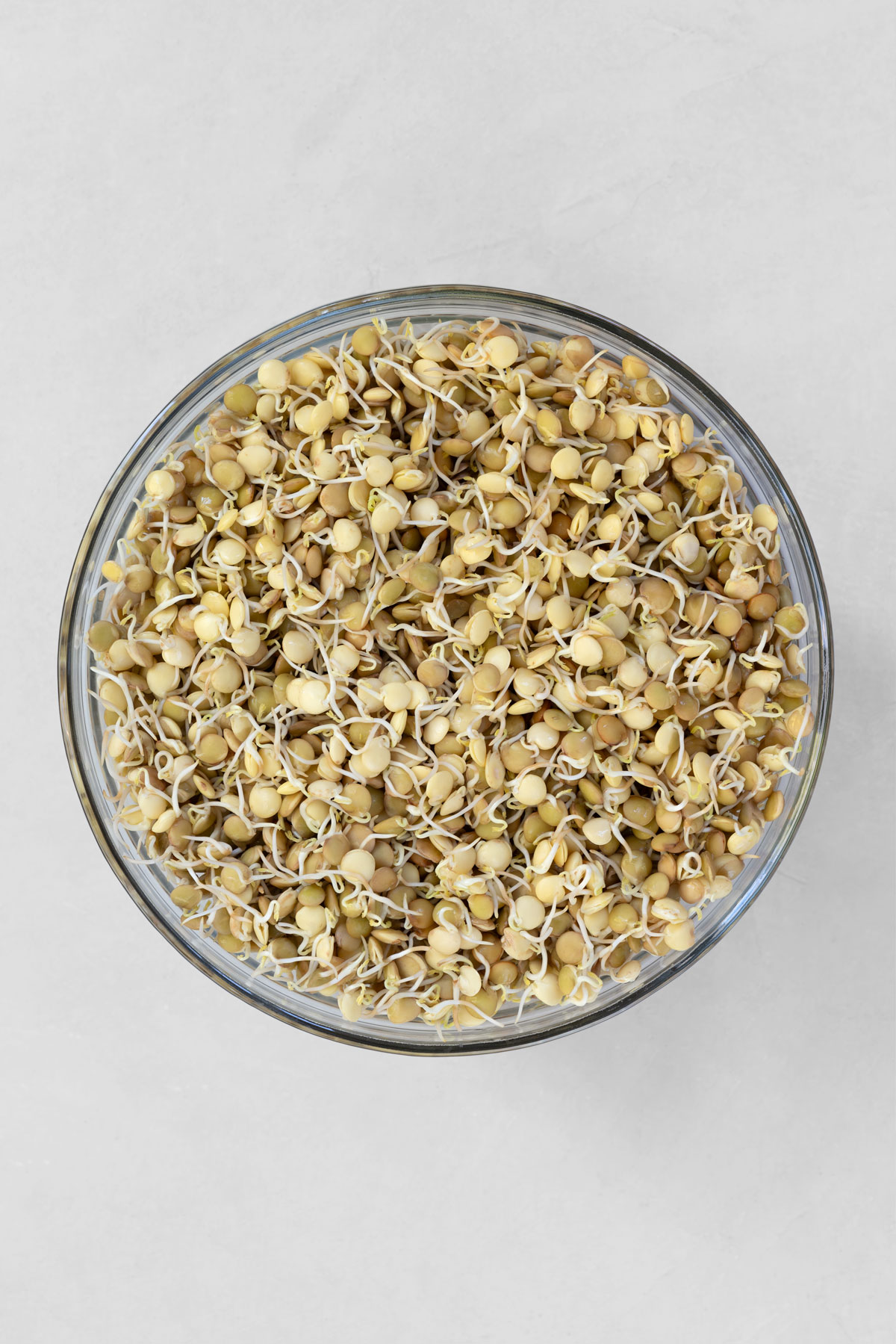
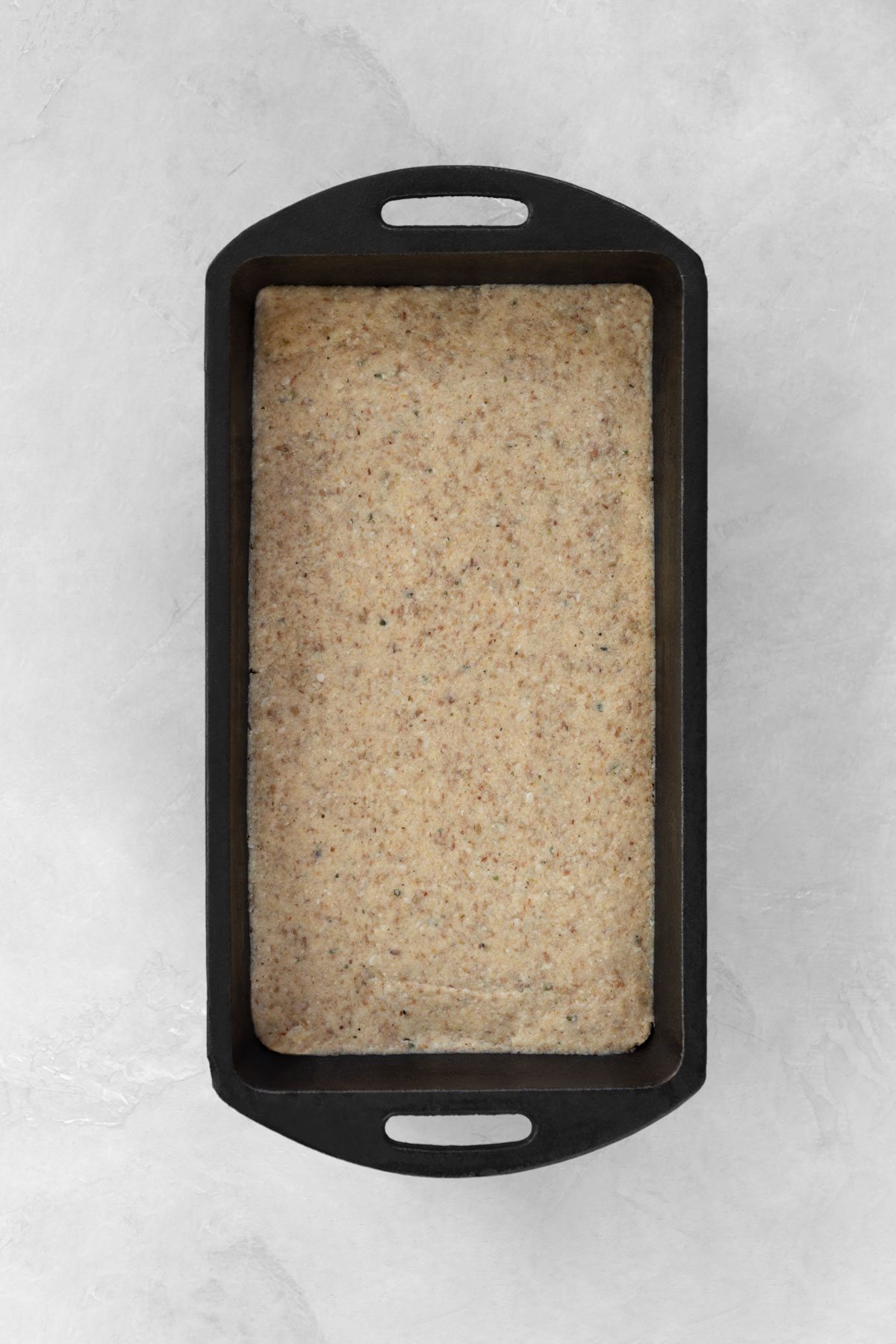
How to Serve High-Protein Bread
This high-protein and high-fiber bread is similar to whole-wheat bread – nutty and earthy with a soft yet dense texture.
Since the bread is more savory than classic, whole-wheat bread, it pairs well with savory spreads, such as hummus or guacamole. It toasts well, so I often use it to make avocado toast or bruschetta toast. It’s also great with pureed soups, whether it’s for dipping or in the form of croutons.
How to Store Lentil Bread
- Storing at room temperature: wrap the bread in a large tea towel (so it can breathe) and store it in a cool place for up to 3 days. Room temperature is ideal for maintaining proper crumb and crust texture.
- Freezing: slice the bread first. Transfer individual slices into an airtight bag, one on top of the other, in an alternating 90-degree pattern, and press out as much air as possible. Freeze for up to 3 months.
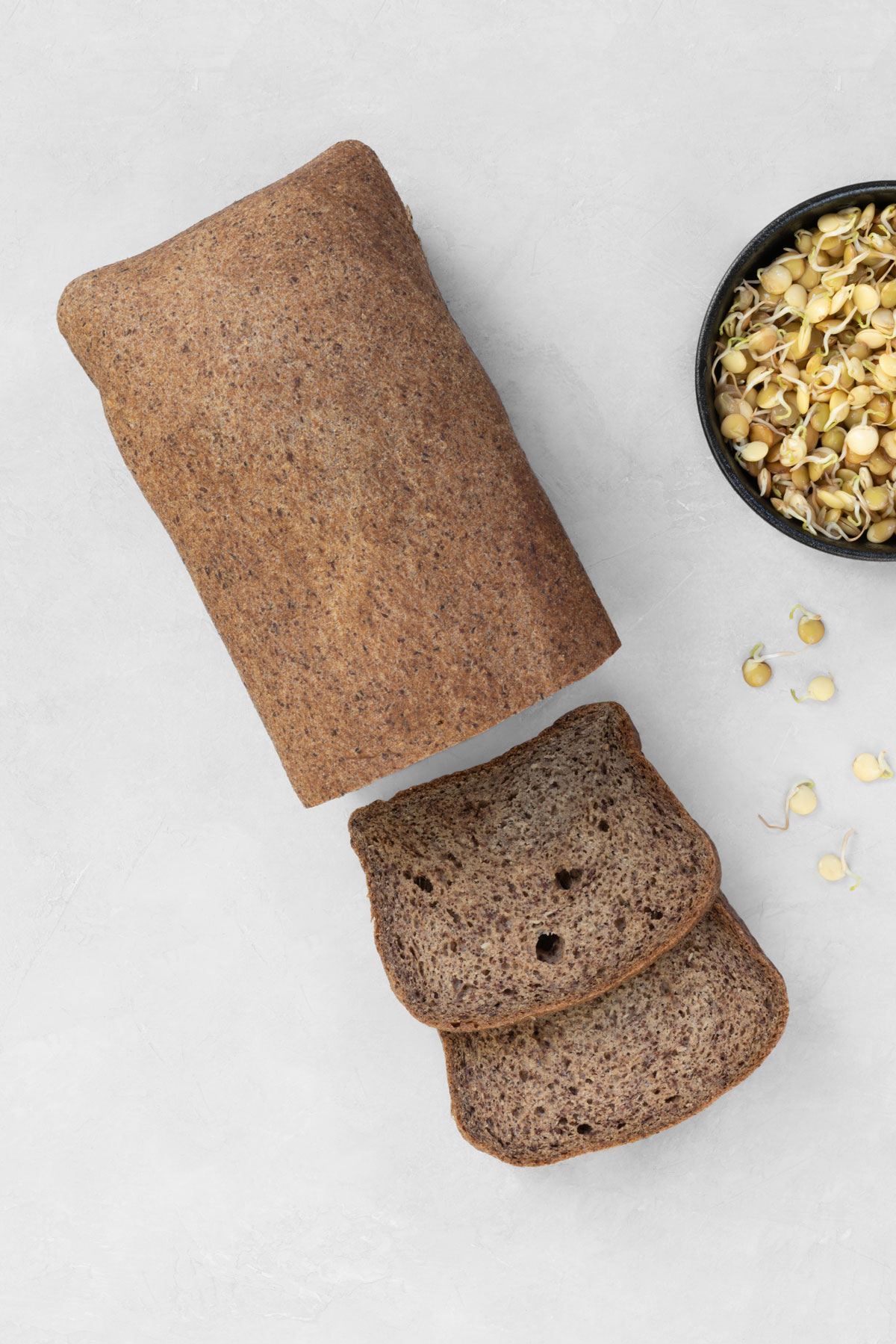
More Gluten-Free Bread Recipes
- Nut and seed bread: this bread is unique because it’s not light, fluffy, and airy like the typical flour-based bread. Quite the opposite – it’s nutty, chewy, hearty, and filling.
- Buckwheat quinoa bread: making traditional sourdough bread isn’t hard, but the process requires some planning and practice. This buckwheat quinoa bread is essentially a sourdough bread without a sourdough starter. It has a slightly tangy flavor and a hearty texture with a firm crust and a moist, soft interior.
- Flaxseed bread: if you’re looking for low-carb keto bread, this recipe is it! This flaxseed bread is mildly nutty, crusty on the outside, and soft and moist on the inside.
If you try any of these recipes, please leave a comment and rate the recipe below. It always means a lot when you do.
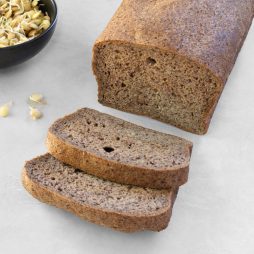
Protein Lentil Bread
Ingredients
- 1 1/2 cups (282 g) green lentils
- 1 cup (92 g) chickpea flour
- 1/2 cup (40 g) whole psyllium husk
- 1/4 cup (40 g) hemp hearts
- 1 tsp. (6 g) baking soda
- 1 Tbsp. (15 ml) lemon juice
- 1 tsp. (5.7 g) salt
- 1 cup (240 ml) water
Equipment
Instructions
- Soak the lentils. Add the dry green lentils to a bowl, cover them with water, and let them soak for about 8 hours. Once soaked, drain the soaking water and rinse the lentils.
- Sprout the lentils (optional). Transfer the soaked lentils into a strainer and set the strainer over a large bowl so any excess water can drain. If you’re using a sprouting jar, invert it into a large bowl or another object that allows it to sit at an angle. This lets water drain constantly. The lentils must stay moist but shouldn’t sit in water. Rinse the lentils every 12 hours. After 24-36 hours, sprouts should start to emerge. If there are no sprouts, drain, rinse, and leave again for a few more hours. While sprouting is not necessary, it does boost fermentation activity.
- Process. Add the sprouted (or just soaked) lentils to a food processor together with the chickpea flour, psyllium husk, hemp hearts, baking soda, lemon juice, salt, and water, and process until a dough forms. The reaction baking soda creates upon contact with acid is immediate, so don’t let the dough rest and work as quickly as possible before all the bubbles dissipate.
- Bake. Transfer the dough into a parchment paper-lined 8 x 4 inch/20 x 10 cm loaf pan, smooth the top with a spatula, and bake the bread at 380°F/193°C until crispy and golden brown, for about 50 minutes.
- Cool. Transfer the bread onto a cooling rack and let it cool completely before slicing.
- Store. Wrap the bread in a large tea towel (so it can breathe) and store it in a cool place for up to 3 days. For longer-term storage, slice the bread first and then transfer individual slices into an airtight bag, one on top of the other, in an alternating 90-degree pattern, and press out as much air as possible. Freeze for up to 3 months.


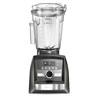
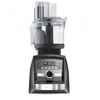
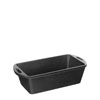
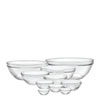
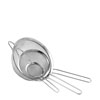
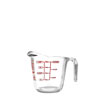
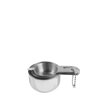


Absolutely delicious! Even my husband – who regularly consumes heavily processed breads loved this. Thank you for sharing such wonderful recipes.
That makes me so happy, Jennifer!
I’m a little confused about the amount of lentils you’re supposed to use. 1 1/2 cup dry lentils or soaked and sprouted? 1 1/2 cups of dried lentils expands a lot and with all the other ingredients, this would be too much to fit in my regular-sized food processor, which holds about 6 cups max.
Hi Emily – my apologies for the confusion. It is 1 ½ cups dry lentils (before soaking and sprouting).
What is the measurement of lentils after soaking and sprouting and is there a substitute for lemon juice
Hi Sara – hmm, a great question. I haven’t measured the sprouted lentils, to be honest, but I will do it next time I make the bread and will add it to the recipe card. As far as the lemon juice goes, you can use any acid you like (lime juice, apple cider vinegar, etc.).
Hello,
Would that work with lentils from a can? Or do they require to not be cooked?
Hi Georgia – I haven’t tried this recipe with cooked lentils. I always used dry (and then soaked, ideally also sprouted) lentils.
Petra, this bread’s crumb looks absolutely wonderful! I wish I could give a taste test, but guess I’ll have to make my own. I’ve had mostly failures on my gluten free bread attempts and have felt defeated. I used to love baking bread, rolls, cinnamon roll treats and more, but now I dread having to make bread. I miss a good slice of bread that you could chew, make sandwiches with. This bread looks so good it has inspired me to try one more time. I happen to have some red lentils soaked and now sprouting in a collander for 48 hrs. They are not growing tails as most red lentils will not, but I have been unsure about what to make with them, thinking a flatbread of some sort so I won’t have to eat dense, wet, too dry or overall yuk loaf. I wonder if I might use these lentils in your recipe instead of brown?
Hi Denise – I am so sorry you haven’t had success with gluten-free bread. I use red lentils in my bread rolls (https://nutritionrefined.com/red-lentil-bread-rolls/) – a very similar recipe. So, I imagine that red lentils would work in this recipe as well.
Hi Petra. I don’t have green lentils but I have green lentil sprouting seeds. Can I use them interchangeably?
Hi Drudheena – if I understand you correctly, you have green lentils that are already sprouted. If so, yes, you can use them interchangeably. However, I don’t know how many cups exactly you get from 1 ½ cups of dry green lentils. 1 cup of dry lentils can produce as much as 8 cups of sprouts. I am currently soaking my lentils, so I can let you know how many cups of sprouts I get.
I made this, mixing the ingredients in smaller batches as my food processor is not as large as the one used in the demo above. Once everything was ground I mixed it up it a bigger bowl and then added the baking soda and in my case apple cider vinegar instead of lemon juice.
I mixed in the fizzy soda/ cider with a spatula, and needed to add a bit more water as the mix overall seemed a bit dry, maybe 1/2 cup more in my case.
Then, poured the mix into 3 silicone mini bread molds.
Baked 50 minutes, then took each loaf out and flipped them upside down in the molds and put back in for 10 minutes so that the moist undersides could dry out. Then, cooled them on a baking rack.
Came out well. Nice outer crust but moist and chewy inside.
Wonderful! Thank you for sharing your feedback. I am glad the bread turned out well 🙂
Hi Petra,
Is there a good sub for the hemp hearts? I don’t usually have those at hand. Thanks.
Hi Denise – yes! You can use sesame seeds, sunflower seeds, pumpkin seeds… if you use gelatinous seeds (e.g., chia seeds or flax seeds), make sure you don’t use more than the recipe calls for otherwise the texture of the bread will change.
Hi Petra,
Just made the bread and it cooled down. When I cut it the texture is dense and moister than I’d like. Not sure what I did wrong. Maybe I wasn’t supposed to pack the dough into the pan? I pushed it down into the corners with a spatula and then smoothed off the top with by wetting the spatula. Do you leave your dough lumpy when put in the pan?
Hi Denise – I do pack the dough for sure, so that should not be an issue. A few questions (to help me troubleshoot this):
1. Have you changed any of the ingredients the recipe calls for?
2. Did you bake the bread as soon as you mixed the baking soda with the acid? And a related question – did the bread rise properly (similar to mine)?
3. How big was your loaf pan?
Absolutely phenomenal! I grew up with European rye bread (dense and full of nutrition). The crumb of this loaf reminds of my childhood breakfast breads. I love the flavor, the nutrition and the ease of preparation. I chose to sprout my lentils and I’m happy that I did. A big hit for me—I’d give more stars if I could!!!
That just makes me so happy! Thank you so much for the wonderful feedback and rating, Ida!
Is there a way to get the phytic acid out of the chickpea flour before putting it in the recipe.
Hi Lynda – you could make your own chickpea flour using soaked and then dehydrated chickpeas. I do that with nuts (when making nut butter), but it takes up more time for sure.
Hi Petra,
I can’t thank you enough for this delicious protein lentil bread recipe. I watched in amazement as the lentils magically sprouted over 3 days. On the 3rd day, I made the bread. I let it cool before slicing and boy was I happy!!! So moist, flavourful and healthy. (I no longer like the taste of wheat bread). I made avocado with poached eggs over the lentil bread for breakfast this morning. Delicious. Thank you for such a healthy bread recipe.
Thank you so much for taking the time to share your feedback, Sylvia! I am so happy you liked the bread.
I just made this bread, and I absolutely love it!!! ❤️ Thank you for posting this recipe – it will for sure be my new go to bread. It’s been quite hard for me to find a gluten-free alternative with great consistency and taste, but this does it all!
Thank you for the great feedback and rating, Sofie!❤️ I am happy you found a recipe that works for you.
Thank you Petra for a delicious recipe. I baked it last night. Love it ✨
That’s great to hear! Thank you for the feedback, Paola!
I’ve made this bread 3x already and it is so good. The only problem I’m having is, the bread comes out of the oven do big and puffy, but then deflates and collapses as it cools down. Any suggestions? Thanks.
Hi Susan – first, thank you for your wonderful rating! I appreciate it. Second – how much does the bread collapse? Does it completely deflate? What does the crumb look like? Are there any bubbles? Does it look anything like my bread in the pictures/the video? The more information I have, the better I will be able to help 🙂
Hi Petra, it looks like your picture when it first comes out of the oven. But as it cools, the top of the bread deflates. Thanks.
OK, and what does the inside of the bread look like? Is it airy (are there bubbles)? Or does the bread completely collapse and become dense?
Hi Petra,
I made my first lentil protein bread according to your recipe. It is very easy to make and it is delicious.
Do you think I can use dry chickpeas that I soaked overnight and ground instead of ordinary chickpea flour? It is very difficult to find chickpea flour in my country.
Thanks.
Hi Natalija – thank you for your feedback and rating! That’s wonderful. You could make your own chickpea flour at home, using either dry or soaked chickpeas. BUT if you soak the chickpeas, you will have to dehydrate (dry) them. The chickpeas need to be completely dry to turn into flour.
Thank you, Petra!! for sharing the recipe for this best protein rich bread. Tastes amazing, the only problem I had is it didn’t rise like yours, but it is soft and tastes great.
Please share recipes high in protein, and low in carbs. thank you 🙂
Hi Bhavita – the first thing I would do is check whether your baking so is still active: simply mix ¼ tsp. baking soda with 2 tsp. lemon juice and see if it bubbles. If it doesn’t, it’s old and should be replaced. If it does bubble, then the next step would be to make sure you’re putting the bread into a preheated oven as soon as you mix the baking soda with the lemon juice. The reaction of baking soda and acid is immediate, so if you wait even a few minutes, the bread may not rise properly (since there won’t be enough carbon dioxide to inflate the dough). Please let me know if you have any questions.